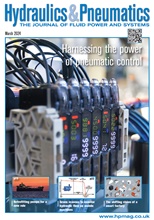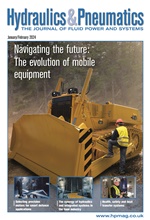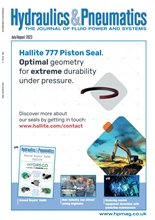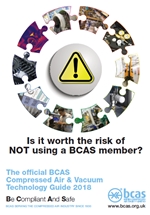Bürkert and the holistic approach to Industry 4.0
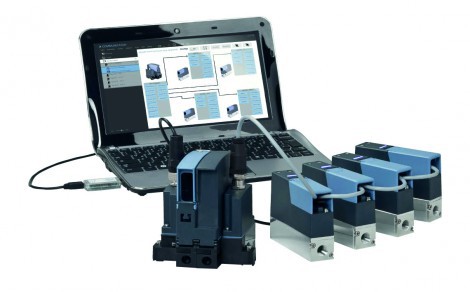
The term ‘Industrie 4.0’ was originally coined within the context of a project related to the German government’s commitment to promoting computer technology within the manufacturing. ‘Industrie 4.0’ then became the main theme of Hannover Messe in 2011 and almost immediately gained a lot of traction as one of the most important ‘on trend’ topics within technical journals around the globe.
By now, most engineering and manufacturing professionals will have at least a basic grasp of what Industry 4.0 means or pertains to; namely, technologies such as cloud computing and cyber-physical systems – smartphones, laptops etc. integrated with the physical processes a company might have on the manufacturing shop floor to control or monitor their performance.
But, to what extent is the intention of Industry 4.0 – to achieve greater efficiencies through greater connectivity between computer/cyber technologies and things in the physical world – becoming embraced and realised by manufacturers, or is it still mainly a theoretical ideal?
Re-appraising companies’ solutions requirements
According to Heribert Rohrbeck, managing director and CEO of Bürkert Fluid Control Systems, Industry 4.0’s envisaged and intended changes are indeed becoming real, step by step. He maintains that dialogue about the concept provides manufacturers and their technology/equipment suppliers with the chance to re-appraise the types of solutions necessary to truly bring Industry 4.0 to life and to conceive genuinely valuable solutions for their businesses.
“It is clear that simply developing and marketing individual components designed with Industry 4.0 in mind will not suffice,” he said. “The basic foundation must also be in place. The key concepts here are the wish for bespoke yet cost-effective products as well as efficient handling of small order quantities starting from batch sizes of 1, with short delivery times. This requires maximum flexibility both from the production facilities and in the supply of materials and, of course, on the part of employees. As a result, every company is facing its own fourth industrial revolution that it must overcome by itself in order to be fit for the future.”
Within the context of fluid control solutions, Rohrbeck explained that Bürkert offers, and continues to develop, a range of solutions designed to fully realise Industry 4.0. One example he cites is the EDIP (Efficient Device Integration Platform) communications platform, which enables intelligent networking down to the level of sensors and actuators.
“Although these types of innovations are positive and important, they are ultimately only beneficial if the right foundations are in place,” he said. “Rather than operating solely in just one sub-area, companies must therefore adopt a holistic approach in order to maximise the measurable added value for the customer – or better still, for the customer's customer. The foundation of this is founded on a whole range of different competencies, all of which must in turn be closely aligned with one another.”
Company-wide management and control
A key element for implementing digitisation at Bürkert is Product Lifecycle Management (PLM). Rohrbeck pointed out that PLM refers to the well-known process of holistic, company-wide management and control of all product data and processes of the entire life-cycle across the expanded logistics chain – from design and production through to sales and all the way to disassembly and recycling.
He added, however, that this procedure must be applied even more systematically than before. “This calls for carefully configured data structures to ensure that information is stored so that it can be retrieved quickly when needed, e.g. characteristics lists,” he said.
Rohrbeck added that, in this regard, Product Data Management (PDM), which stores data from the product development and makes it available to the downstream phases of the product life-cycle, has an important role to play. He also pointed out that, at the same time, an intelligent connection to the Master Data Management (MDM) and ERP system (Enterprise Resource Planning) is required – and employees must also be taken into account. “They must be suitably qualified and receive further training so that they can meet future requirements,” said Rohrbeck. “This applies in particular to the sales force, which acts as the interface to the customer. Trained sales professionals act as consultants who listen closely to and understand the needs of customers.”
The role of digitisation in development and production
So, how can this type of digitisation strategy aid the development and manufacture of smart products? In terms of development, Rohrbeck’s view is that it is important to consider platforms that will enable diverse uses of modules or components. However, he believes the fundamental question in this respect is how can existing data structures be combined with the relevant platform to create unique products. “In principle, the process is similar to that of a Lego construction set – individual components can be combined over and over again to create different solutions or to realise new systems,” he said, adding that at Bürkert, these are the ‘building blocks’ of the control circuit – sensors, controllers, actuators etc. – and it is vital to document precisely what is used when and where. “Then nobody needs to hunt through parts lists in order to execute an identical or similar order later on,” explained Rohrbeck.
During the subsequent production, Rohrbeck maintains that a batch size of 1 must also be economically feasible to manufacture. “This calls for a structured process chain, optimum descriptions and, of course, sound data structures – from component availability in the small parts store to the assembly group and all the way to the distribution centre,” he said. “To achieve this, the company IT must be capable of mastering the complex processes. Simply keeping the automatic small parts store at a single Bürkert production plant running smoothly entails twelve computers communicating with one another, for instance.”
Product development processes
Rohrbeck explained that when a product is developed, there are already three different processes that must be taken into account:
• Select to Order (STO)
• STO is where the customer chooses from the standard range of products.
• Configure to Order (CTO)
• CTO is where valve islands, for instance, are configured for specific applications.
• Engineer to Order (ETO)
• ETO involves developing a completely new solution.
“For all of these, the platform concept mentioned above once again plays a key role in realising these types of bespoke solutions cost-effectively,” he said. “However, the expert in fluid control already has many of these processes well under control today: In the case of valve islands, for instance, hundreds of thousands of which are delivered each year, the average batch size is 7.”
Based on this strategy and the underlying skills, Rohrbeck pointed out that new business models can then emerge. “Initial examples include the EDIP platform as well as the On-line Analysis System, the Mass Flow Controller 8741/8742/8745/8746 or valve islands 8652/8653/8647, which can already be produced in batch sizes of 1,” he explained. “This shows how important it is to lay a solid foundation for Industry 4.0.”
However, Rohrbeck added that it is not just digitisation within the company that plays an important role; there is also the market and the individual customer. He explained that an important concept in this context is Service 4.0. “Only if the production and logistics processes as well as the products are smart can customers access all the information they need, such as when a service is due, or receive immediate assistance should problems arise,” he said.
Looking to the future, Rohrbeck concluded that Bürkert is focused on keeping one step ahead of the market; using smart solutions and new business models to make Industry 4.0 a reality.
-
Smart Manufacturing & Engineering Week
05 - 06 June, 2024
NEC, Birmingham -
HILLHEAD 2024
25 June, 2024, 9:00 - 27 June, 2024, 16:00
Hillhead Quarry, Buxton, Derbyshire UK



